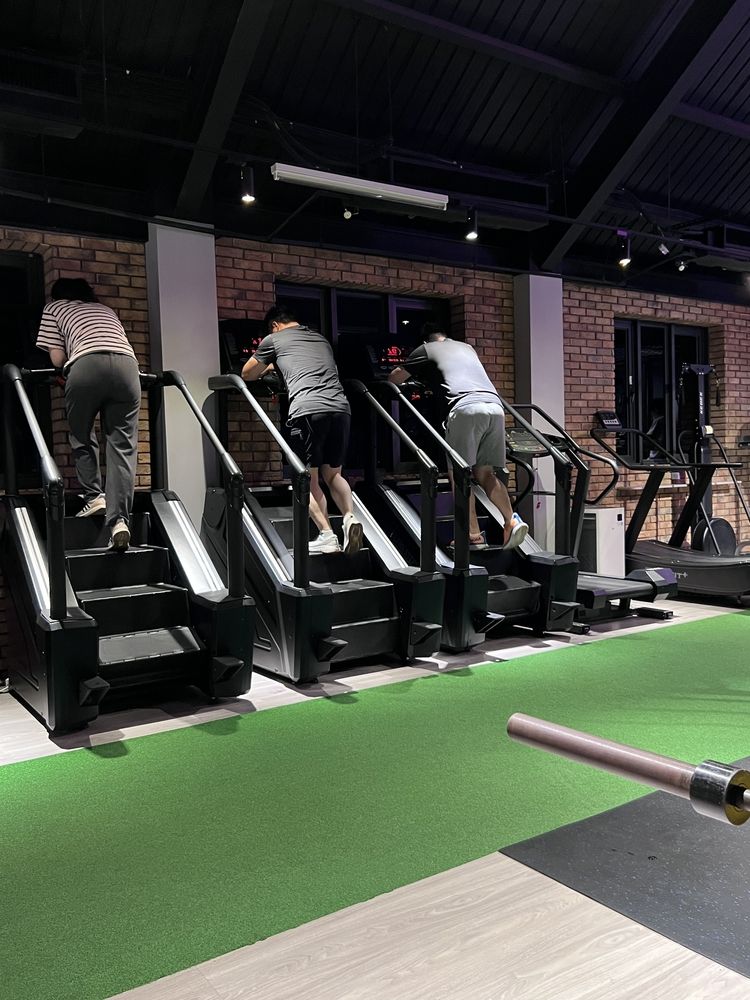
Let’s be honest: There’s something uniquely satisfying about lacing up your sneakers and going for a brisk walk. Whether you’re soaking up the sunshine outdoors or hitting the treadmill, you’re moving your body, boosting those endorphins, and breaking a sweat. But if you’re looking to elevate your daily steps, we’re here to introduce you to stair climbing intervals—a powerful way to burn more calories and supercharge your cardio sessions.
Curious about how stair climbing intervals work? We’re here to explain the process and highlight the benefits of incorporating this dynamic workout into your fitness routine.
What Are Stair Climbing Intervals?
Intervals involve alternating between bursts of high-intensity and low-intensity exercise throughout your workout.
“It creates a cycle where you push your limits and then scale back,” explains Domenic Angelino, CPT with the International Personal Trainer Academy (IPTA). “When applied to stair climbing, this means running up the stairs quickly during one phase, followed by walking or slowly jogging during the next. The exact pace during the recovery phase should match your fitness level. It’s crucial to go slow enough to let your body recover without coming to a complete stop.”
You can practice stair climbing intervals on a stair climber machine or regular stairs at home or outdoors; however, Angelino advises using the machine to reduce the risk of falls. If you choose regular stairs, ensure proper safety measures are in place, and only use stairs with ample surface area. Wearing shoes with good traction can also help reduce the risk of tripping.
“It’s important to note that running up regular stairs isn’t generally recommended for most people due to the unnecessarily high risk of injury,” Angelino adds. “The only exception is for athletes with specific training needs. When possible, it’s safer to use a stair climber machine.”
How Can Stair Climbing Intervals Help You Lose Weight?

Incorporating stair climbing intervals into your fitness routine can be incredibly effective, especially if you're aiming to lose weight. Stair climbing intervals burn more calories than steady-paced workouts of the same duration.
"Burning more calories leads to greater fat loss," Angelino notes. "To lose about one pound per week, aim to burn roughly 500 more calories than you consume each day. For a goal of losing two pounds per week, increase that to around 1,000 calories. It's generally best to cap weight loss at an average of two pounds per week unless your doctor advises otherwise."
Beyond the high calorie burn, interval training places significant demands on your body. This involves running at a fast pace that you can only maintain briefly, followed by a slower pace, and alternating between the two.
"You pack multiple high-intensity training periods into a single workout," Angelino explains. "This approach allows you to burn a significant number of calories during the workout and continue burning them even after the workout is over."
How To Use Stair Climbing Intervals for Weight Loss:

There are several ways to incorporate stair climbing intervals into your routine. If you're also doing strength training, Angelino recommends scheduling that on a separate day.
For the best stair climbing interval workout, Angelino suggests different options based on your fitness level and available time:
Easier Options:
- 9-minute session: Alternate between 30 seconds of high-intensity exercise and 30 seconds of low-intensity exercise.
- 20-minute session: Alternate between 2 minutes of high-intensity exercise and 2 minutes of low-intensity exercise.
- 30-minute session: Alternate between 1 minute of high-intensity exercise and 1 minute of low-intensity exercise.
Harder Options:
- 9-minute session: Alternate between 1 minute of high-intensity exercise and 30 seconds of low-intensity exercise.
- 15-minute session: Alternate between 2 minutes of high-intensity exercise and 1 minute of low-intensity exercise.
- 25-minute session: Alternate between 3 minutes of high-intensity exercise and 2 minutes of low-intensity exercise.

